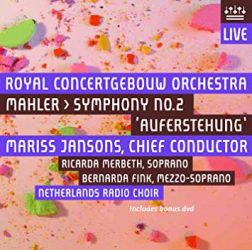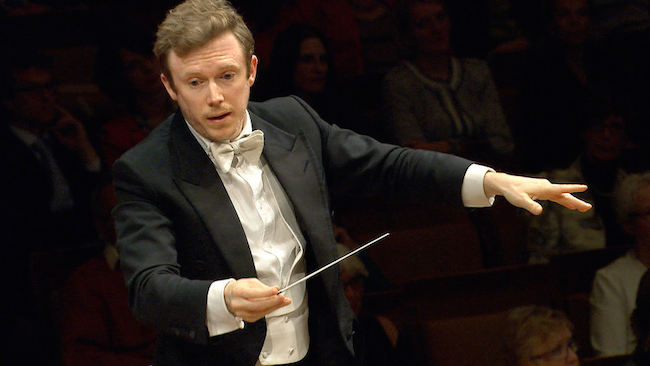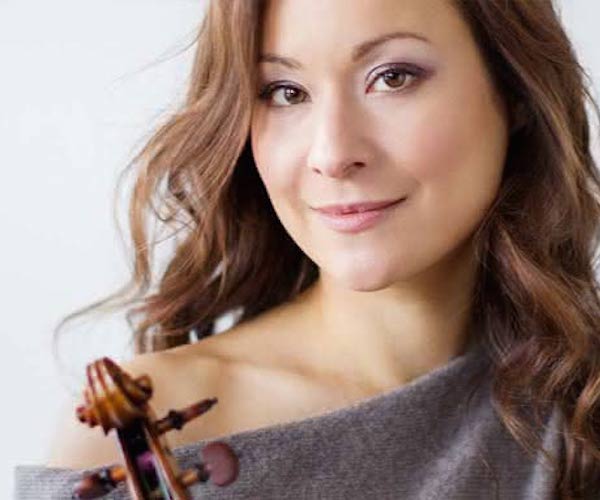Classical CD Reviews: Jansons’ “Resurrection” Symphony, Harding’s Mahler Five, and Steinbacher’s Strauss
Two Mahler symphony entries: one is above average, the other a disappointment. Violinist Arabella Steinbacher delivers a first-rate and strongly recommended disc.
By Jonathan Blumhofer

Mariss Jansons’ new recording of Mahler’s Symphony no. 2 is, in some regards, a lot like Sir Georg Solti’s old one with the Chicago Symphony (CSO): impressively played, swiftly-paced, and packing more than a few sonic wallops. Jansons’ recorded sound is better and the singing a bit more accomplished, but the Bavarian Radio Symphony Orchestra’s (BRSO) level of virtuosity is about on part with the CSO’s of nearly forty years past.
The main problem with Solti’s Mahler was its occasional reliance on bluster at the expense of structural drama and/or spiritual transcendence. There’s some of that here, mostly in the first movement, where Jansons’ interpretation ignores (or minimizes) some of Mahler’s obsessive tempo indications. But, especially in the finale, Jansons seems rather more sympathetic towards the work’s larger goals than Solti.
On top of that, his overall conception of the piece is uncluttered and lacking in pretense. The second-movement ländler comes across as a carefree song, sweet and naïve. The Scherzo trips along with plenty of energy, even if its rustic moments might be played a bit more rambunctiously. Bernarda Fink’s performance of the “Ulricht” is beautifully measured. And the finale unfolds in a remarkably straightforward thirty-three minutes.
Throughout, the BRSO sounds excellent. The album’s engineering is remarkably precise: despite the score’s massive climaxes, it’s the delicate gestures – particularly Mahler’s subtle writing for harp and many of the woodwind lines – come across with impressive clarity. And those explosive apogees lack for nothing in intensity or fullness of sound.
Both Fink and soprano Anja Harteros deliver warmly-sung accounts of their last-movement solos. The BRSO Chorus, too, sings with wonderful intonation and sonorous tone – the low bass lines, in particular, come across with rounded sturdiness.
In all, then, Jansons’ Mahler Two has more than a few things going for it. It won’t dethrone or replace any of the classic or more idiosyncratic readings of the piece, but it’s a welcome, above-average entry into the discography all the same.

Daniel Harding conducing — 2/3rds of a really fine Mahler Five with the remainder vacillating between forgettable and OK.
Daniel Harding’s new recording of Mahler’s Fifth Symphony with the Swedish Radio Symphony Orchestra (SRSO) follows the pairing’s mighty account (out earlier this year) of the same composer’s Ninth Symphony. Does the metaphorical lightning strike the same place twice?
Alas, no. And that’s despite some tremendous playing from the SRSO and, individually, fine accounts of several of the Symphony’s movements. The big third, for instance, is marked by magnificent, ruddy brass playing and lots of schwung in its ländler interludes. The famous Adagietto’s fantastic: well-paced, texturally pellucid, and singing with sumptuous fervency. Over the first four-fifths or so of the finale, Harding draws out the music’s raucous counterpoint with plenty of energy and sunshine.
But the coda is an anticlimax: golden and fortissimo, yes, but blown through like yesterday’s news. Where’s the wonder of triumph this awesome moment requires? Not to be found here.
Then there’s the Symphony’s Part One (consisting of the first two movements). Part of the problem with them revolves around tempo choices that are frustratingly broad. Granted, fourteen minutes for the opening funeral march doesn’t make it the slowest on record; neither the swiftest. To be sure, Leonard Bernstein’s 1988 recording of the Fifth boasts an opening movement that lasts nearly half a minute longer than Harding’s. But this one is, in a word, lethargic, lacking the sense of direction, energy, and passion that these brooding pages demand. Indeed, the closing double bass pizzicato is one of the most dispiriting thuds with which I’ve ever heard this movement close.
In the second movement, its deliberate echoes of the funeral march feature more of the same. Thankfully, these passages are balanced by some terrifically forceful playing from the SRSO in the stormy episodes and some lovely, transparent woodwind solos in the coda.
So, what you’ve got here is basically 2/3rds of a really fine Mahler Five with the remainder vacillating between forgettable and OK. Given what’s out there already, that’s not good enough.

Violinist Arabella Steinbacher — a first-rate and strongly recommended disc. Photo: Peter Rigaud.
Violinist Arabella Steinbacher’s already recorded the pillars of the solo repertoire, so it’s good to see her championing less familiar territory of late. Last year brought recordings of the Britten and Hindemith concertos; this year she turns her attention to Richard Strauss’s youthful entry in the genre. She proves a persuasive advocate for the piece.
Steinbacher’s tone, especially in the stratospheric lyrical moments in the first movement, is crystalline and her intonation note-perfect. Her performance is a mix of delicacy and power, easily executing the solo part’s many episodes of filigree and then, in passages of double stops and slashing figures, holding its own with the orchestra. The slow movement is played with winning tenderness (especially the duet between violin and horn) but not too much weight, while the finale is tossed off with stylish panache.
Lawrence Foster leads the WDR Symphony Orchestra (WDRSO) in a taut, lively accompaniment that ably complements Steinbacher’s emphasis on the Concerto’s songful lines.
The disc is filled out by performances of various short Strauss works in arrangement for violin and orchestra.
Steinbacher gives a passionate account of the Romanze, originally a cello-piano piece, and gamely navigates the other excerpts. Highlights include dulcet readings of “Traum durch die Dämmerung” and “Wiegenlied,” a sweeping “Cäcilie,” and a luminous “Aber der richtige” from the opera Arabella (whose title character is Steinbacher’s namesake). The whole effort’s first-rate and strongly recommended.
Jonathan Blumhofer is a composer and violist who has been active in the greater Boston area since 2004. His music has received numerous awards and been performed by various ensembles, including the American Composers Orchestra, Kiev Philharmonic, Camerata Chicago, Xanthos Ensemble, and Juventas New Music Group. Since receiving his doctorate from Boston University in 2010, Jon has taught at Clark University, Worcester Polytechnic Institute, and online for the University of Phoenix, in addition to writing music criticism for the Worcester Telegram & Gazette.
